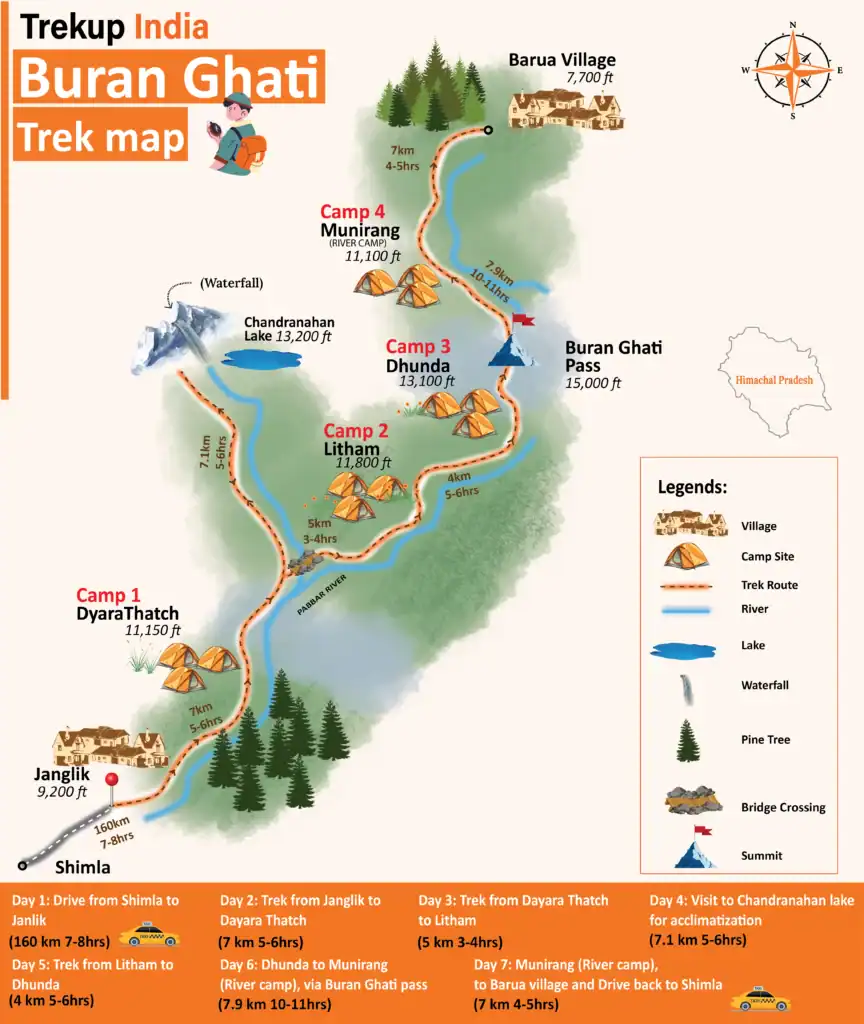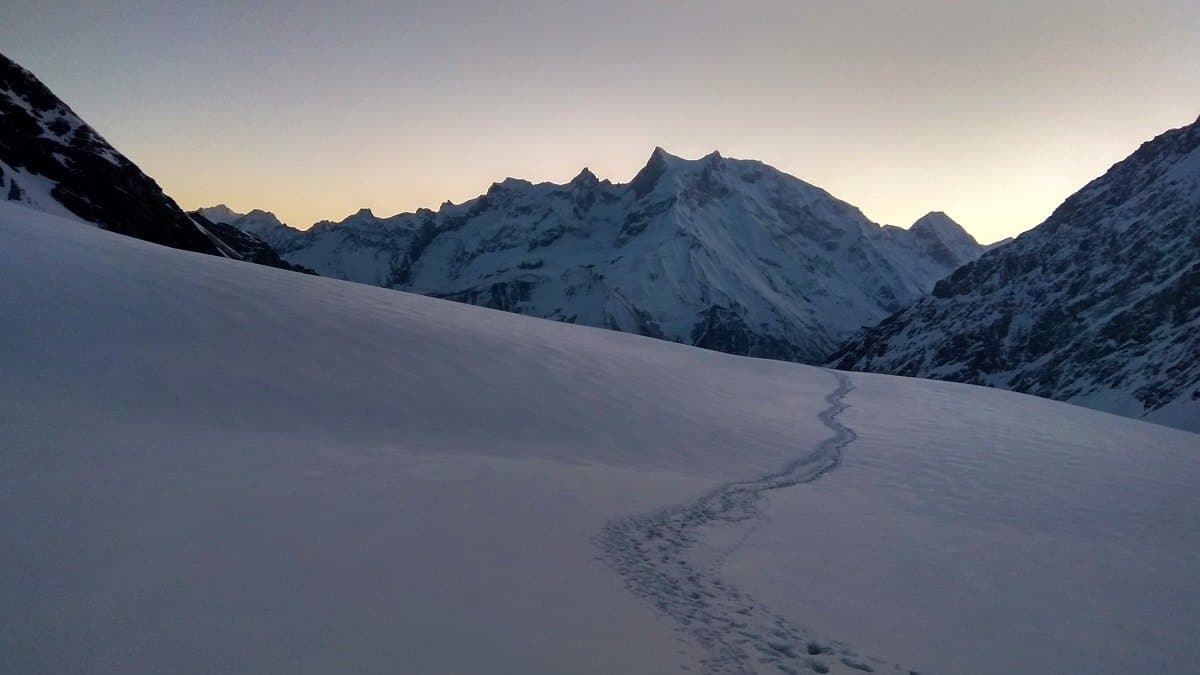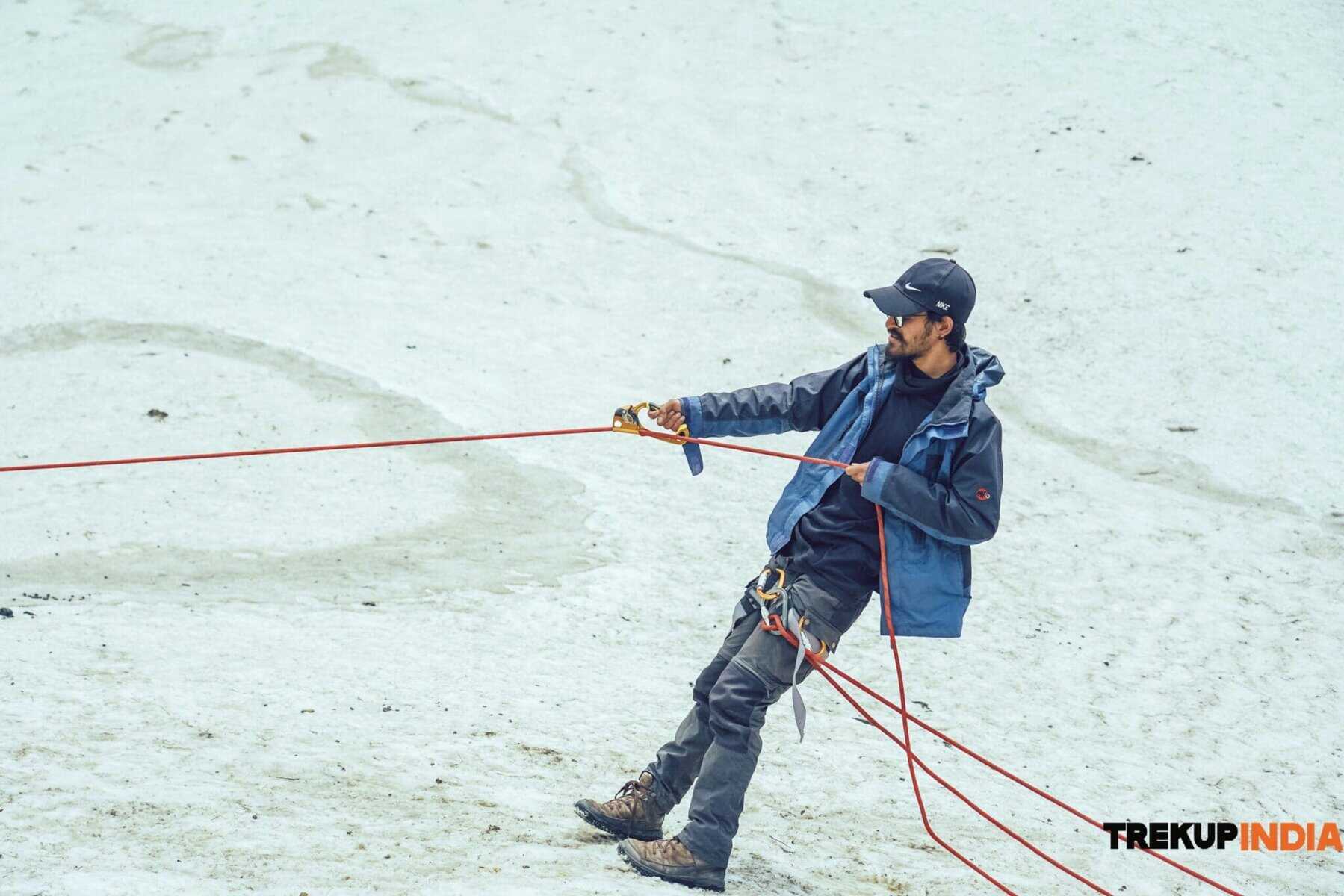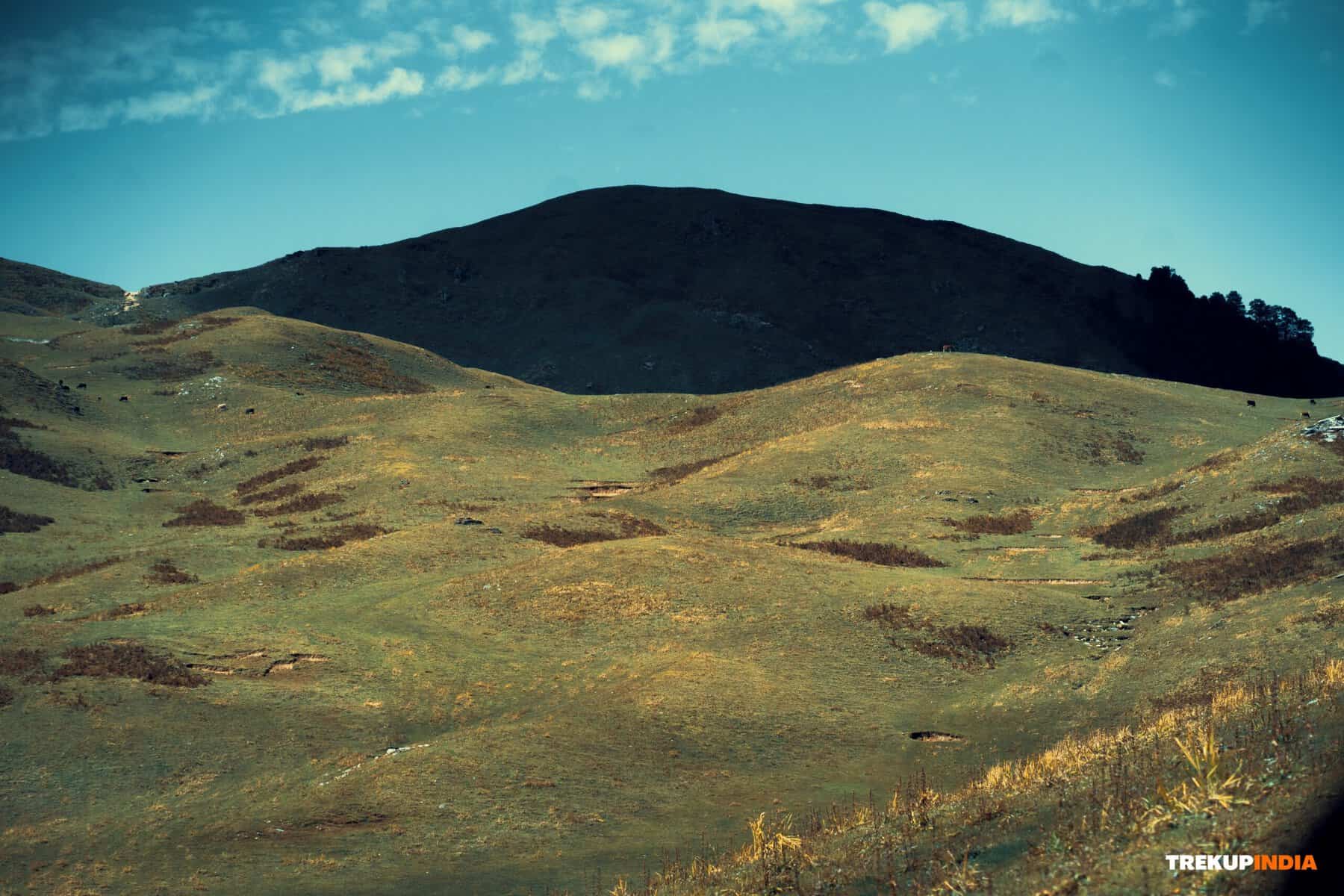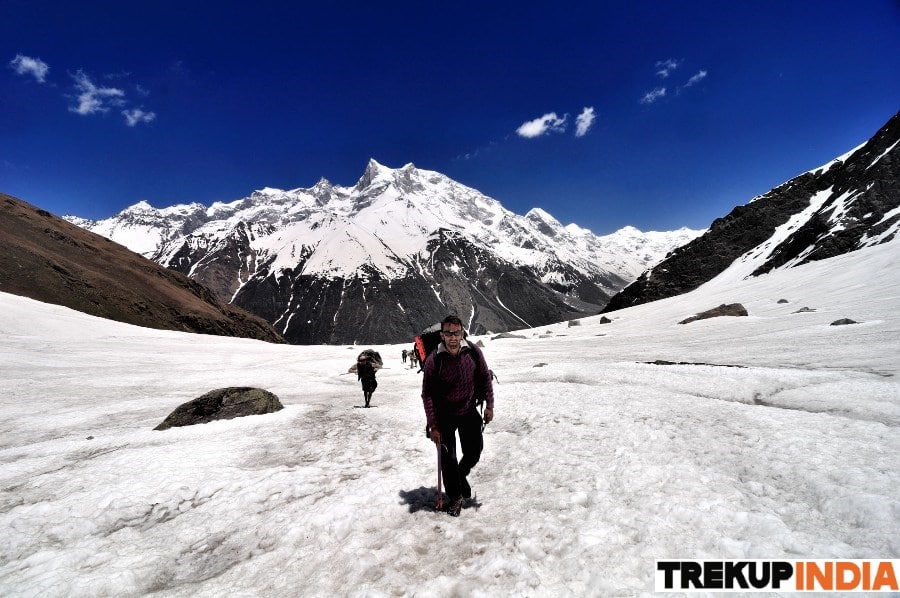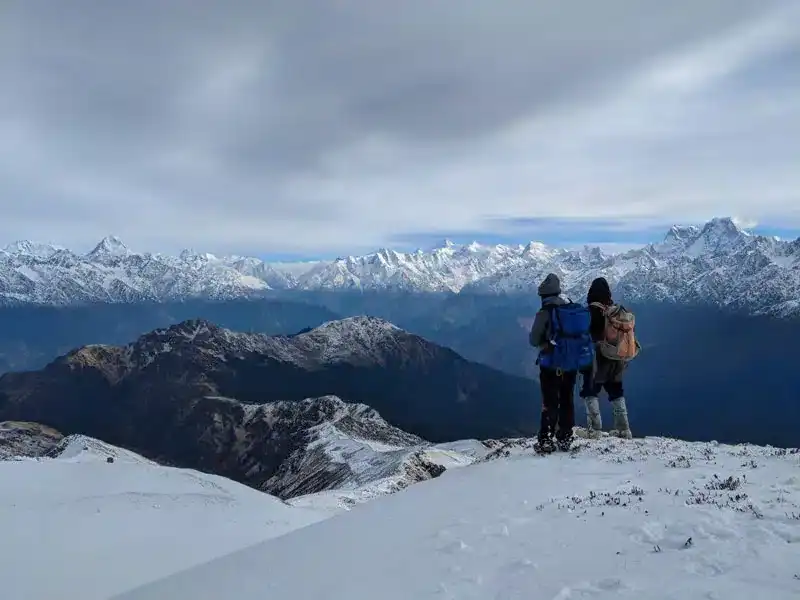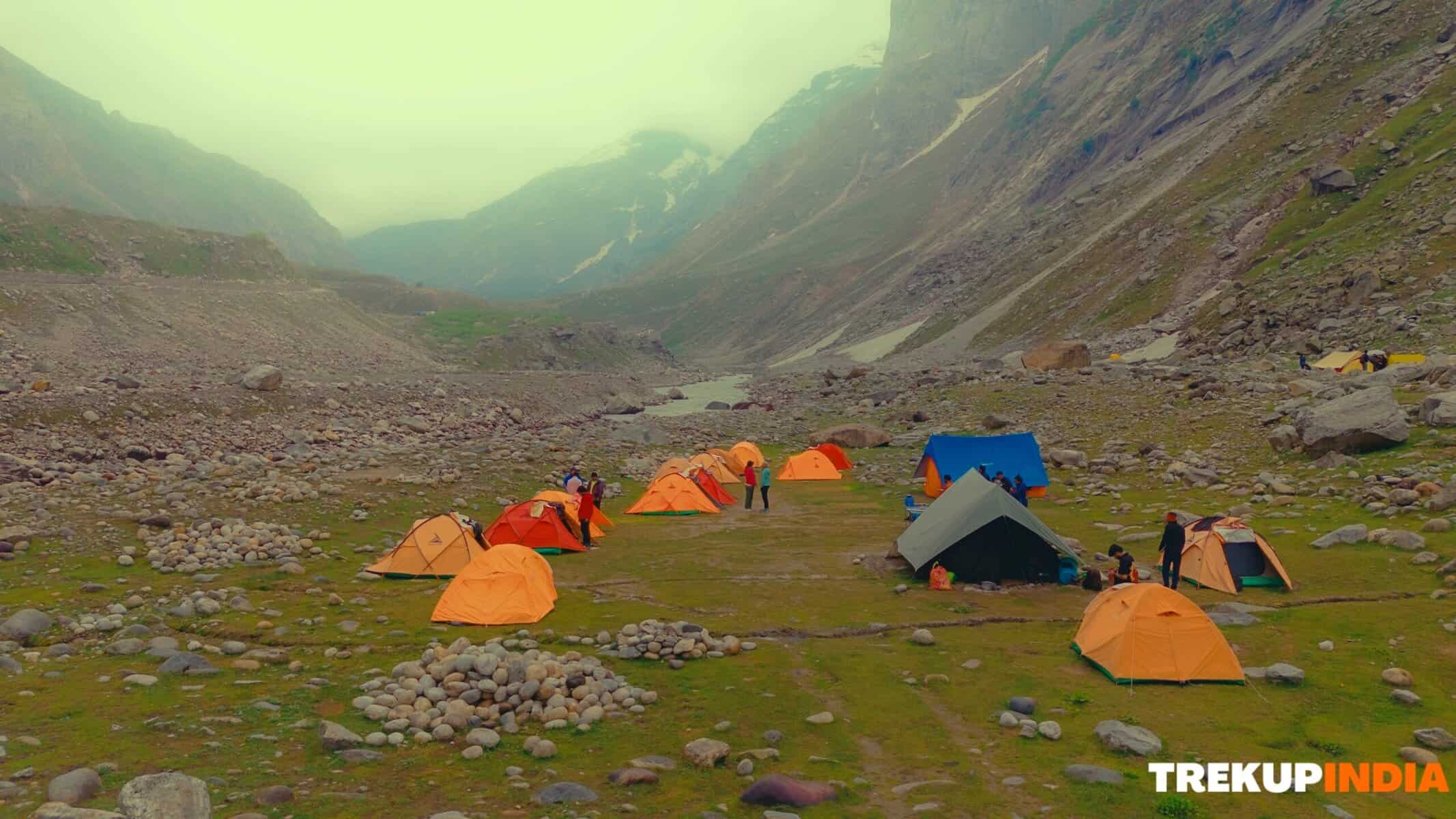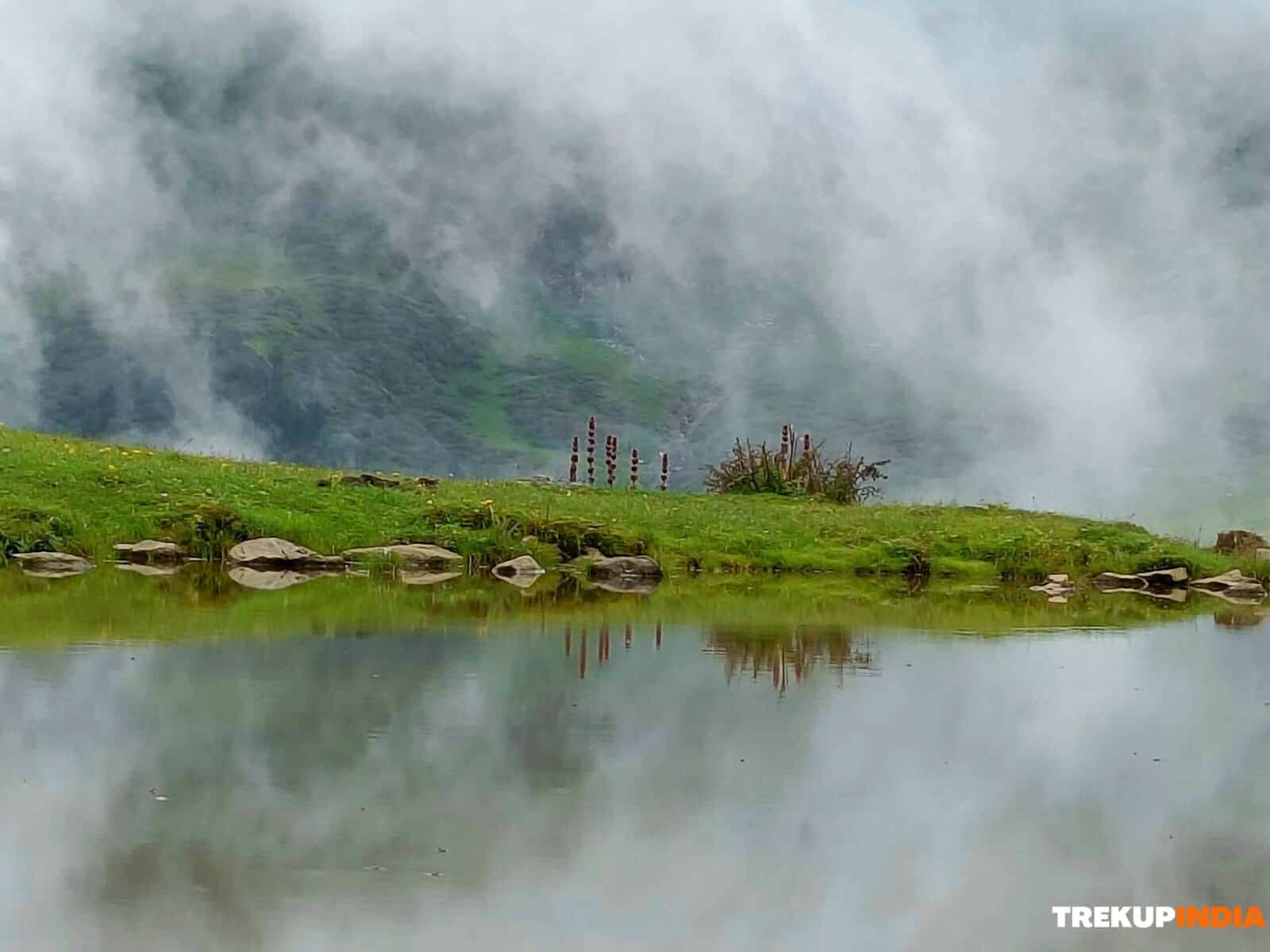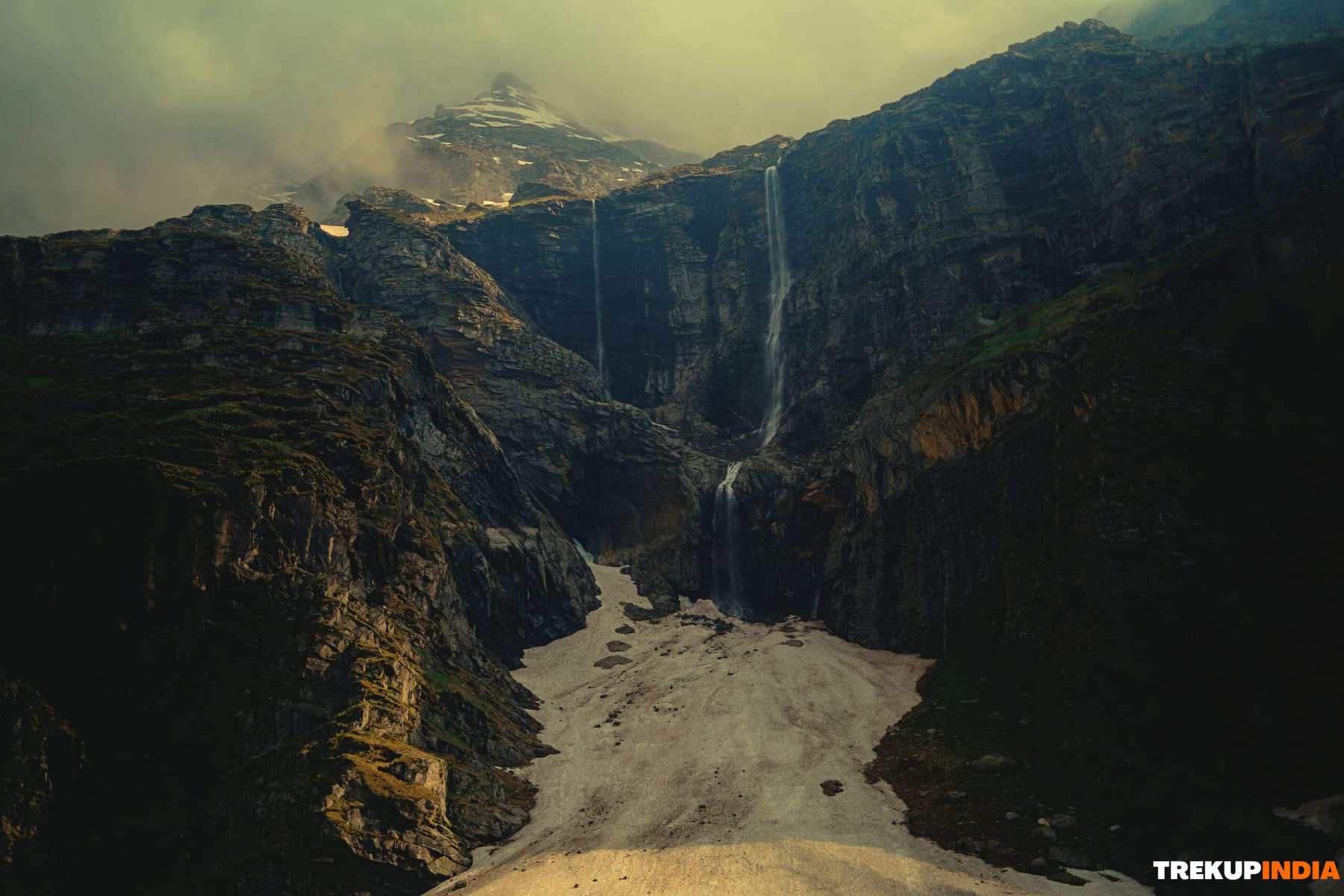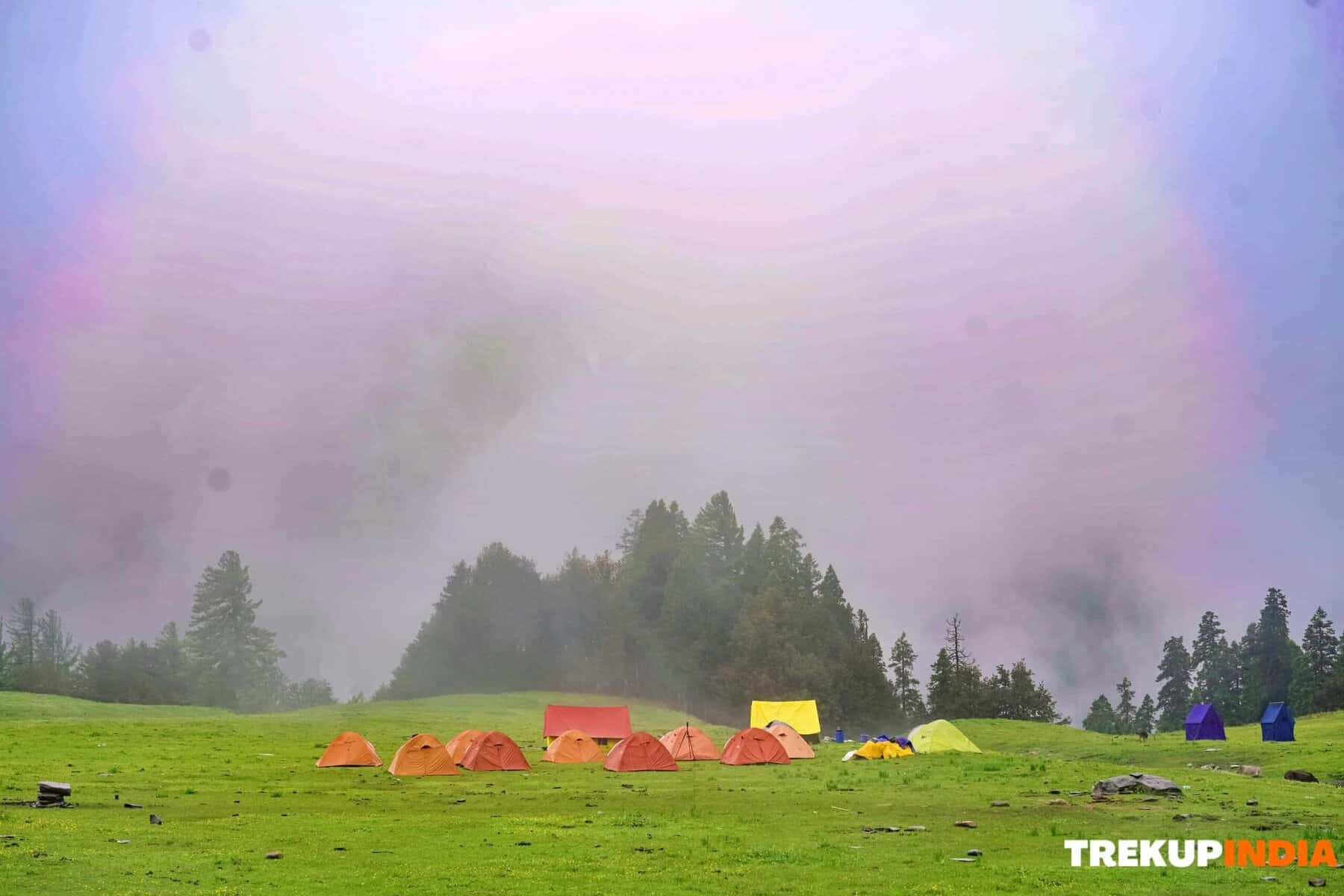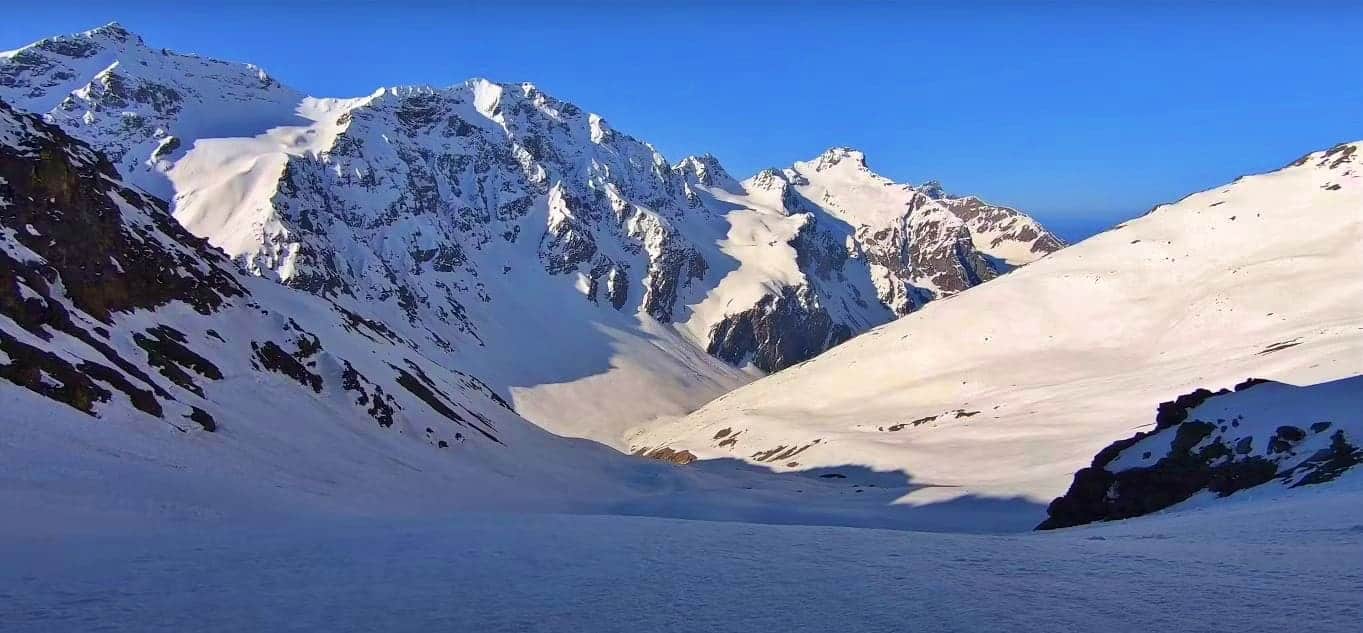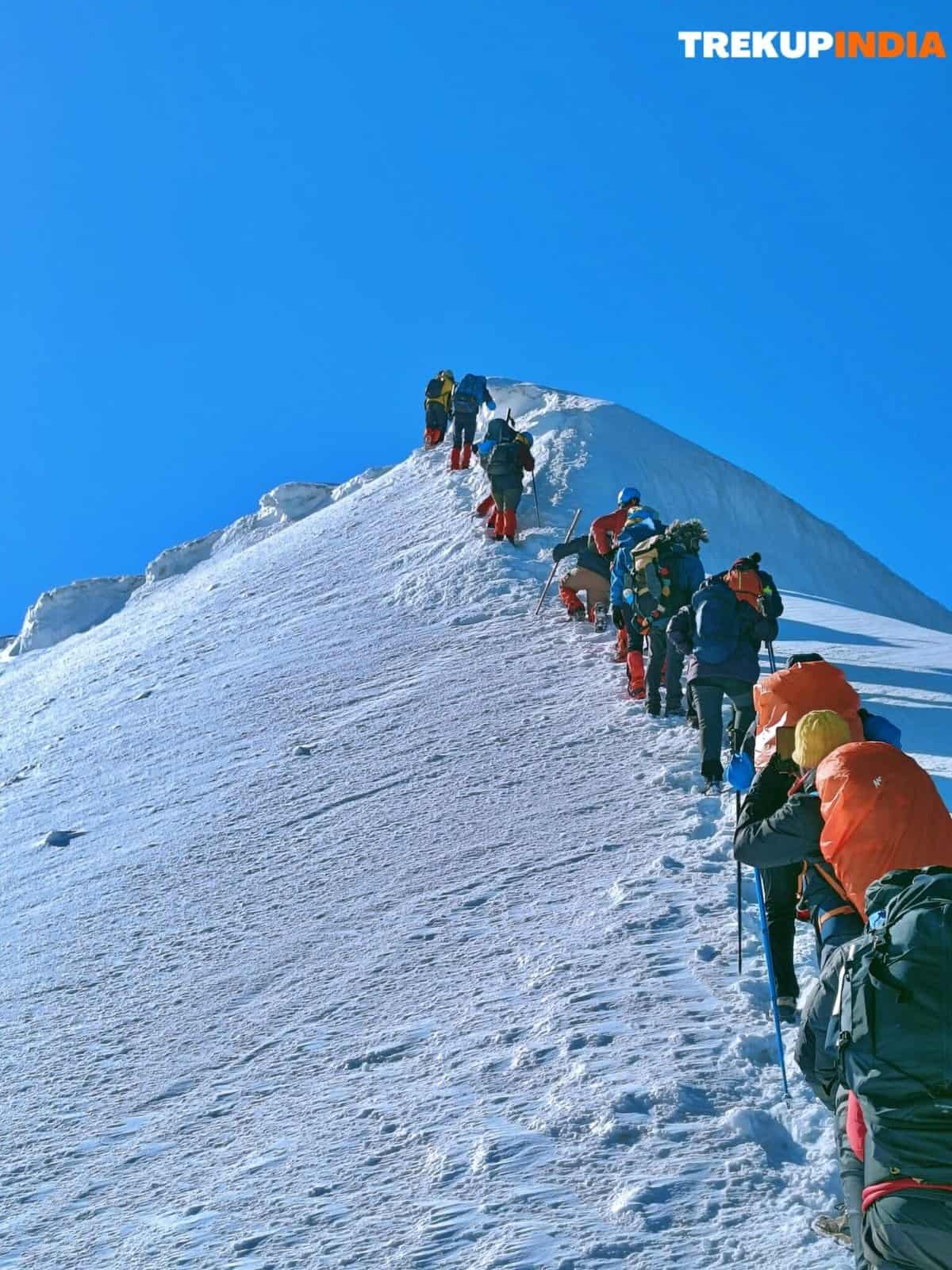30+ Years Of Trusted Trekking Expertise | Crafting Memories Since 1993
Trek Grade
Moderate to Difficult
Highest Altitude
15,000 ft
Base Camp
Janglik
Best Time
May, June & Sept, Oct
Trek Distance
38 Km
Not sure which trek is right for you? Trekup India’s Mountain Experts have you covered.
Not sure which trek is right for you? Trekup India’s Mountain Experts have you covered. From figuring out if a trek matches your fitness level to knowing who you’ll be trekking with, we’re here to answer all your questions. Reach out to our Mountain Experts and plan your trek with confidence.
Buran Ghati Trek
The Buran Ghati Trek in Himachal Pradesh is an exhilarating and challenging 42-kilometre trek that takes about seven days to conquer. Starting from the culturally significant village of Janglik, this trek is rated as moderate to very difficult, with some challenging passages that will test your mettle. It’s a journey that rewards the adventurous spirit and the sense of accomplishment is unmatched. However, it’s important to note that these challenging passages require proper trekking gear, including sturdy hiking boots, warm and waterproof clothing, a backpack, a sleeping bag, and a tent. We recommend trekking with a guide who is familiar with the route and can ensure your safety.
The Buran Ghati Trek takes you through varied landscapes, including mountains, grasslands, forests, and lakes. You will experience the beauty of Dayara Meadows, which offers breathtaking views of snow-capped peaks. On the trek, you will reach an altitude of 15000 feet and explore the glacial lake Chandranahan, which is believed to be the source of the Pabbar River.
The Buran Ghati Trek is not just about the landscapes, it’s about the unique experiences it offers. The snow slides, especially at the Buran Ghati Pass, are not just thrilling, they are an adventure in themselves. This part of the trek can be challenging, and you may need to use ropes to descend. But the effort is worth it as it is an unforgettable experience that will leave you excited and wanting more.
The best time for the Buran Ghati Trek is in summer when you can admire an impressive ice wall. In the evening summer, the Buran Pass turns, and it is an excellent opportunity to experience this. At the end of June, the snow melts, revealing bright wildflowers and lush green meadows that turn the pastures into a paradise. Autumn also offers a beautiful opportunity to experience the Buran Ghati adventure. The natural beauty of autumn with the trees’ yellow, orange, and brown hues is genuinely mesmerizing. However, it’s important to note that the weather can be unpredictable, so it’s always a good idea to check the forecast and be prepared for changes in temperature and conditions.
Irrespective of the season, the Buran Ghati Trek offers a diverse trekking experience. The trek takes you from the culturally significant village of Janglik, which is known for its unique customs and traditions, to the thrilling snow chutes at the pass and shows you the diverse landscapes and experiences that trekking can offer. With the opportunity to experience a unique adventure, this trek is a must for adventurers who want to explore the natural beauty of the Himalayas and immerse themselves in the local culture.
The Buran Ghati Trek offers a comprehensive experience of mountains, forests, and grasslands. This trek is sure to captivate you with its magnificent views of the Dayara meadows, with the snow-capped mountains in the background. The contrasting campsites are a real feast for photographers, immersing you in the beauty of nature.
The Buran Ghati Trek, well-known in the trekking world, has a variety of unique sites along the way. You will be amazed at the variety of landscapes this trek offers. You will love the denser and thicker oak and pine forests you trek through. You will be surprised by the beauty of the vast green meadows, the sharp edges in the high altitudes, the snow-capped peaks, the small streams and rivers, and the charming villages and other landmarks. The high-altitude Chandranahan Lake is one of the highlights of the Buran Ghati Trek. Many locals consider this lake sacred. It is breathtaking from both sides of the Buran Ghati Pass. After staying at the lake, you can do an acclimatization hike nearby, which is a crucial part of the trek to help your body adjust to the high altitude. If you trek in May and June, you will see a lot of snow on this trail. Then, the whole trek looks completely different.
You may need help roping up on the last section of the pass. It’s a climb that you have to manage yourself. However, the view from the top of the pass is worth the effort. You will be overwhelmed by the Dhauladhar range, whose remote peaks rise one above the other, giving you a glimpse of the view. From the top of the pass, you can enjoy a panoramic view of the peaks of Kinner Kailash, a sight that will take your breath away. The Buran Ghati is an excellent trek that offers an exhilarating experience and stunning views that you won’t find anywhere else.
Trek Cost
- Stay will be on a twin-sharing basis in tents
- + 280 Trek Insurance (Mandatory)
- Discount Policy
- Transport Optional ( INR 3,000 extra )
Pickup time 6.30 A.M from Old Bus Stand, Shimla & drop by 11-12.00 P.M on last day
Fix Departure Dates
Buran Ghati Trek Videos
Videos by experts watch these videos to prepare well for a Successful Tre
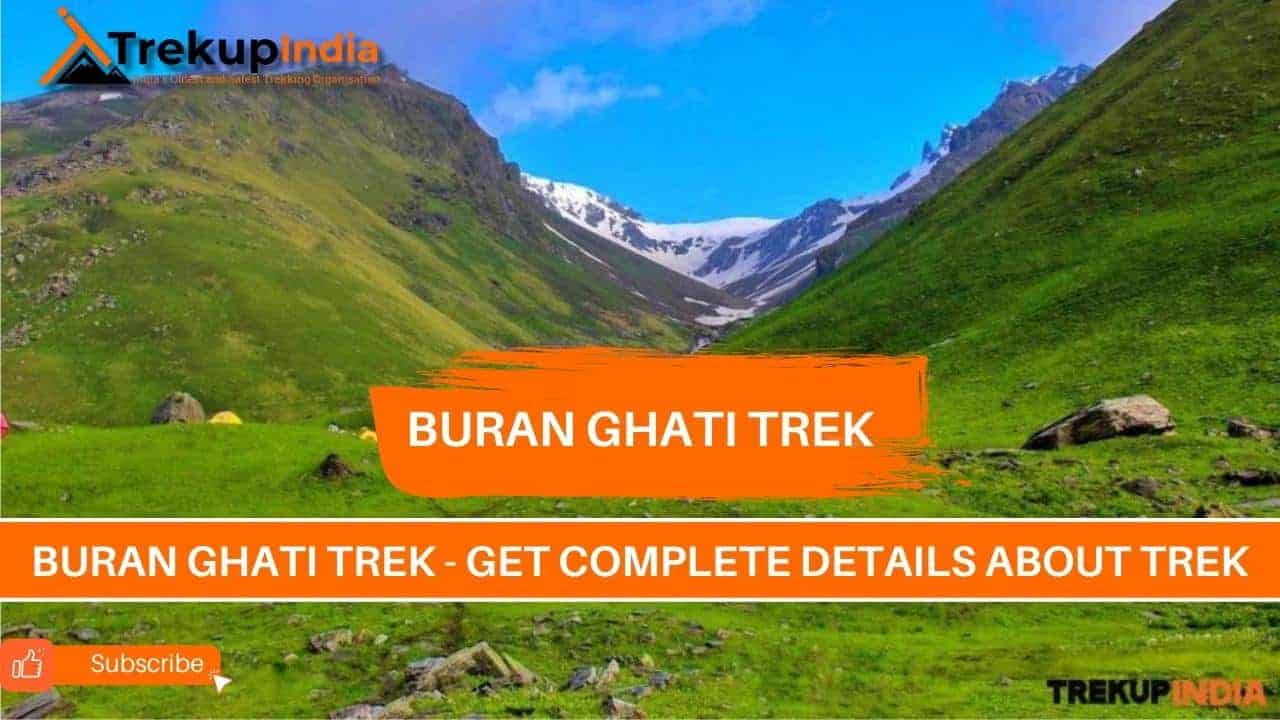
Want To Trek Like Pro?
Basically, watch these videos if you want to trek the same way professional trekkers do and make your skills better. These videos contain useful tips and techniques to further improve your trekking skills itself. These videos actually help both new and experienced trekkers improve their trekking skills. These videos definitely provide useful tips that make your trek better. We are seeing that these videos by Trekup India experts will only help you make your trekking skills better.







Know Everything About Acute Mountain Sickness
Acute Mountain Sickness occurs when people trek to high altitudes above 8,000 feet. This condition itself develops further due to reduced oxygen levels at such heights. Basically, as you go higher up, the air pressure and oxygen levels decrease, which causes the same problem. Acute Mountain Sickness surely causes headache, nausea, vomiting, and dizziness in affected persons. Moreover, peoples also experience difficulty in sleeping during this condition. To avoid mountain sickness, you should actually trek up slowly to higher altitudes. To learn further about this condition itself, watch the videos by Trekup India.



Day Wise Detailed Itinerary of Buran Ghati Trek
Day 1: Drive from Shimla to Janglik
- Altitude:-2,800 m/9 200 ft
- Driving Distance:- 160km
- Drive Duration: 7-8 Hrs
- Pick-up at Shimla Old Bus Stand at 6.30 AM
- Last ATM: Rohru
- Phone Network: Rohru
- Meals: Breakfast, lunch are not included. Dinner included
- Shimla-Rohru: 115 Km Rohru To Chirgaon, 15 Km Chirgaon To Tangnu, Tonglu to Janglik
The starting point for the Buran Ghati trekking is Janglik, the base camp. You will begin the journey with a scenic drive from Shimla to Rohru. Along the way, you will come across charming villages that exude the culture of Himachal. The route is adorned with pine and oak forests with sharp edges, making them a sight to behold. We will have lunch on our way to Diude. Getting to Tonglu will take around two hours since the motorable road at Tikri turns into a dirt track. After you reach Diude, a hot dinner will be served at the campsite or guesthouse. It’s crucial to note that the last ATM point is located at Rohru, so if you need to withdraw cash, make sure to do so beforehand. Similarly, Rohru is the only place along the route where you will find phone network coverage, so it’s wise to plan your communication needs accordingly.
Day 2: Trek from Janglik to Dayara Thatch
- Altitude: 3,400 m/11,150 ft
- Trek Distance: 7 Kms
- Trek Duration: 5-6 Hrs
- Grade: Moderate ascent
- Water sources are available along the route
- On the way, you will pass a few shepherd’s houses
- Walk through pine, oak, deodar, and meadows
- Hot lunch and snacks will be provided at the camp site
- For better acclimatization, climb a hillock in the evening.
- Stay in tents on twin sharing basis.
As you wake up each morning, you’ll be greeted by a bright view of the valley. Before we begin our walk, you’ll be served breakfast and tea. Our path will take us past beautiful, hand-crafted wheat fields and charming wooden farmhouses with stunning roofs that will catch your eye. After about an hour of climbing, you’ll be rewarded with a breathtaking view of Diude Tonglu and other small villages. We’ll take a break for refreshments in the shade of pine trees before continuing on a relaxing forest trail, where you’ll be able to enjoy the beauty of the forest and small streams that have a cooling effect on your senses.
Take the time to appreciate your surroundings because it takes time to appreciate mother nature’s beauty fully. The trees will start falling away from the ground almost immediately, but you’ll soon be surrounded by calm pine or oak trees that are thicker and denser than the older ones. The trail will gradually climb before descending again. Tonight, we will camp in the Dayara meadows and climb the nearby hillock to help acclimatize your body to the higher altitudes. Dinner will be served at the campsite after you return from your acclimatization walk.
Day 3: Trek from Dayara Thatch to Litham
- Altitude: 3,600 m/11,800 ft
- Trek Distance: 5 Kms
- Trek Duration: 3-4 Hrs
- Grade: Easy gradual ascent followed by descent
- Water sources are available along the route
- Explore dense forests, meadows, and brooks
- Today, you’ll see the Silver Birch (Bhoj), forest and Chandranahan falls
- Views of snow-capped mountains in the Dhauladhar range
- Hot lunch on the camp site.
After waking up and enjoying a hearty breakfast, you can start your day by exploring the breathtaking Dayara Meadows. A refreshing walk in the morning hours is a great way to enjoy the cool breeze and the lush greenery around you. The beauty of the meadows is further enhanced when the first rays of the sun shine down on them, casting a magical aura in the air.
On the way from Dayara to Litham, you will come across dense forests, sprawling meadows and sparkling streams. These streams offer the perfect opportunity to fill your water bottles and quench your thirst. As you trek further, you can see the majestic Dhauladhar mountain range, which will leave you amazed with its snow-capped peaks.
One of the most impressive places on the trail is the Bhoj forest, which offers a spectacular view of Lytham. After crossing the Chandranahan stream, you will finally reach the Litham campsite, where you will spend a peaceful night under the stars. From the cool breeze to the sound of the nearby stream, Litham Campsite offers an unforgettable camping experience that will leave you rejuvenated and refreshed.
Day 4: Visit to Chandranahan Lake for Acclimatization by Trek
- Altitude: 4,020 m/13,200 ft
- Trek Distance: 7.1 Kms(Both Way)
- Trek Duration: 5-6 Hrs
- Grade:- Difficulty, Steep ascents and descents
- Start your day early
- Water sources are available along the route
- Small glacial Tarn
- Chandranahan is a group consisting of 7 lakes
- Up to 3 lakes can be viewed
- Hot lunch on the camp site
We must start early to make the most of our day, as today’s ascent and descent will be steep. After a delicious breakfast, we will embark on an exciting adventure to visit Chandranahan Lake for an acclimatization walk. This walk is an excellent opportunity to acclimatize to the altitude and take in the stunning views of the surrounding landscape.
As we make our way towards the lake, we will pass through beautiful terrain and continue our climb upstream towards the waterfall. If you join us in June, you will be lucky to witness the area covered in snow, creating a stunning white blanket that adds to the beauty of the surroundings. The lake itself will also appear smaller than usual due to the surrounding snowfields.
Once we reach the lake, you will have a chance to take pictures and admire the stunning views while enjoying the serene atmosphere. The surroundings offer several picture-perfect spots, so don’t forget your camera!
Before we head back to Litham, we’ll need to descend steeply to reach our campsite before lunch. This exciting and rewarding walk is an experience of a lifetime that you won’t forget anytime soon. Get ready to capture some of your life’s most amazing views and memories!
Day 5: Trek from Litham to Dhunda
- Altitude: 4,000 m/13,100 ft
- Trek Distance: 4 Kms
- Trek Duration: 5-6 Hrs
- Grade: Moderate. Mixture of steep ascent & gradual.
- Water sources: Streams running along the trail
- The Pass can be seen from the Camp Site
- The shepherds mark the trail well
- Hot lunch on the camp site
It would be best to make a two-hour climb that will leave you breathless. The place is located at an elevation of 13,300 feet and is surrounded by stunning snowy mountains. It’s a perfect destination for adventure enthusiasts. You can see Gunas pass from here, situated atop the snowy mountains. Looking to the left, you’ll see Litham’s grassland; to the right, you’ll see the picturesque Rupin Valley. Combining grey and white mountains with lush greenery makes it a unique sight.
You’ll get the first glimpse of Buran Ghati on your left as you make the steep ascent to Dhunda. You can take some amazing pictures here and capture the breathtaking views. You can start the climb to Dhunda by following the shepherd trail to the pass, from where you can see the Buran Ghati trail.
As you continue your journey, you’ll be surrounded by snow-capped mountains from all sides, making you feel like you’re in the middle of a winter wonderland. The entire campsite at Dhunda is a beautiful spot to camp in the alpine mountain ranges, with clear skies and fresh air that will rejuvenate your senses. You can set up your tent and take in the stunning views of the mountains, valleys, and the sky. With its tranquil ambience and pristine beauty, Dhunda is a must-visit for anyone looking to experience the beauty and serenity of nature.
Day 6: Dhunda To Munirang (River camp), via Buran Ghati pass by Trek
- Altitude:- 3,400m/11,100 ft via 4,550m/15,000 ft ( Buran Pass Height )
- Trek Distance: 7.9 Kms
- Trek Duration: 10-11 Hrs
- Grade: Difficulty, Steep ascents and descents
- Bring at least 2 litres water with you to the campsite
- Both ascent and descent are technical. Always be with Trek leader or other support staff.
- The other side of the valley is filled with junipers, crested shrubs and more
- Camp close to the farmer’s hut and river
Embark on an exhilarating journey from the Dhunda campsite, walking along the ridge and navigating over the scree to the base of the pass. The climb from the base to the summit, mostly covered in snow, is a thrilling adventure that usually takes about an hour. Scaling the majestic Buran Ghati, standing tall at 15,000 feet, involves crossing a narrow ledge at the summit and negotiating a steep slope on the opposite side. The descent, even with an ice axe, can be a daring feat.
As you set off, your initial target is to reach the first snowfield, located approximately 100 meters below the pass. From there, a series of smaller ledges await, offering a thrilling slide down. The descent on the Buran Ghati trek is swift, and before you know it, you will have descended all the height you previously gained. Typically, it takes about two hours to reach the end of the snowy area, losing about 3,000 feet in altitude.
As you descend beyond the snow line, a picturesque ridge adorned with junipers and beautiful flower-covered shrubs unfolds before you. The view of a lush green valley, stretching as far as the eye can see, with towering mountains in the distance, is a sight to behold. After an hour’s descent, you come across a stream you must cross by jumping over it. The first farm huts appear as soon as you have crossed the stream. Here, you set up camp for the night by the river, surrounded by nature’s beauty.
Day 7: Munirang (River camp), to Barua village and Drive back to Shimla
- Altitude: 2,300m/7,700 ft
- Trek Distance: 7 Kms
- Trek Duration: 4-5 Hrs
- Grade:- Easy, gradual decline
- There are only 3 water sources along the route. Carry 2 litres of water.
- The trail is well-marked
- Cross through mixed forests
- Reach Barua village before 12:00pm
- Lunch at Barua village on the way to Shimla (not part of the price)
- Barua to Shimla at 1:00 PM (transportation is included in the price)
- Shimla can be reached between 10:00 and 11:00 PM (please book your hotel at Shimla accordingly).
On the last day of your trek, you will drive to the village of Barua, known for its dense foliage. This trail is ideal for photography enthusiasts and offers breathtaking views as you hike downhill. The trail consists of a mixture of trees, including towering pines. After an hour’s descent, you will come across a large stream that flows into the Barua Khud. As you cross the stream, you will discover many shrubs, peach, and apricot trees. An hour later, you will see apple orchards and signs of farming. The descent speeds up as soon as you reach the village. The road bridge is only half an hour away, and you will be picked up in Shimla at 13:00. We expect you to arrive between 10:00 am and 11:00 am. Please make sure you book your hotel in Shimla accordingly.
Buran Ghati Trek Route Map
We’ve prepared a comprehensive Trek Route Map for your upcoming adventure to Buran Ghati Trek, which outlines the entire journey including all stops and trails. This map provides detailed information on the terrain, distance between points of interest, and estimated travel time to help ensure a safe and enjoyable trek. We’ve carefully curated the map to ensure that you have all the necessary information at your fingertips. Please take a moment to review it thoroughly, and don’t hesitate to reach out if you have any questions or concerns.
Buran Ghati Trek Altitude Chart
The Trek Altitude Chart is a useful tool for Trekkers to monitor their altitude changes during their rides, allowing them to plan their routes more efficiently and track their progress over time. This Buran Ghati Trek chart is beneficial for both casual and experienced Trekkers, helping them make the most out of their Trek experience.

Trek Cost Inclusions
- Stay: 5 Nights of tented accommodation at individual campsites of Trekup India on twin sharing and 1 Night at Trekup India homestay at Janglik
- Meals: Trekup India will provide freshly cooked meals during the trek starting with Dinner on Day 1 to Lunch on day 7 (Meals are simple, nutritious, and vegetarian)
- Transport (Optional): Shimla to Janglik and return from Burwa to Shimla. ( 3,000 extra )
- Trek Insurance (Optional): Trekup India recommends that all trekkers consider getting trek insurance. This is optional, but highly recommended. Trek insurance covers unexpected events that may occur during your trek. The cost of the insurance starts from INR 280. Please read more about what is included in the coverage and why it is mandatory on treks.
- Trek Equipment: Sleeping bag, Sleeping tents, Kitchen tent, Dining tent, Toilet Tent.
- Amenities: All utensils, sleeping mattresses (Black foam mats), Crampons, and Gaiters for snow.
- Health & Safety: First Aid Box, Oxygen Cylinders, Stretchers, Oxi meters, BP Machines, health.
- Permits: Forest Permits and Camping Permission Fee
- Trek Crew: High Altitude Chef, Helpers, Trek Leader & Guides, and other support teams.
- Potters & Mules: Potters and Mules are to carry all trekking equipment, ration, and vegetables.
Trek Cost Exclusions
- GST 5% (it is Mandatory)
- Any Meals/accommodation beside the itinerary or not mentioned in the program.
- Any Bus / Airfare to/from trek start/end point
- Personal Medical expenses do carry your medication.
- Any personal services such as Laundry, phone calls, liquors, mineral water, etc.
- Any still / video camera fee
- Any Entrance fee Monuments, Monasteries, Museums, Temples – Pay directly on the spot.
- Backpack Offloading (Mule/Porter Charges)
- Offload Charges: ₹2940 per bag for the full trek if paid online in advance.
- On-spot Payment: Charges may increase by up to 30% if paid at the base camp.
- Weight Limit: Each bag must not exceed 10 kg.
- Note: Offloading is optional and is recommended for those who prefer to trek with a lighter daypack.
- Any emergency evacuation charges
- Any services that are not mentioned in the cost inclusion section.
What should you pack for the Buran Ghati Trek
Buran Ghati Trek is a high-altitude trek. The trekking gear you have to have for this particular trek differs from normal treks. Thus, read this whole segment. There is an important question that the trekker who is doing trek asks, like what all things to carry while trekking. Below, we have provided the details on everything you should take; an easy way to remember is by Head to foot or foot to head. We have prepared from Head to foot.

Head Gears
When trekking it's important to carry headgear to protect your head and face.
Heading out for a trek? Don’t forget to carry headgear to protect your beautiful face and head from the sun, wind, and dust! It’s an essential accessory that keeps you safe and comfortable throughout your adventurous journey. So, make sure you pack it before you step out into nature!
- Head Lamps – When trekking at night, headlamps are essential to illuminate your path while keeping your hands free. Headlamps come in different sizes and lumens, so it is essential to choose one that suits your needs.
- Hats or Cap – Caps or hats are also necessary when trekking in different weather conditions. Caps protect your head from the wind and freezing temperatures at night, while hats provide shade and protection from the sun during the day. It’s essential to ensure that your hat has a strap to prevent it from being blown away by the wind.
- Sunglasses – Sunglasses are also essential for trekking. Your sunglasses should protect your eyes from harmful UV rays and fit your face perfectly to avoid falling off while climbing, jumping, or crossing obstacles. The glass of your sunglasses should also be designed for different weather conditions to provide optimal visibility.
- Buff / Balaclava – Lastly, a buff or balaclava is a must-have to protect your mouth or neck from extreme temperatures and keep them warm. Buffs and balaclavas come in different materials, thicknesses, and designs, so it’s important to choose one that suits your needs and preferences. Depending on the weather conditions and your activities, you can wear them as neck warmers, face masks, or headbands.
Clothes
When trekking in high altitudes, prepare for cold weather by wearing layers. Layering traps heat, keeps you warm, and allows you to easily adjust your clothing as temperatures fluctuate.
Layering is important for different seasons when trekking. When planning a high-altitude trek, it is important to prepare for the cold weather. Wearing layers is the best approach as it provides both protection and flexibility when the weather changes frequently in the mountains. Layering helps to trap heat and keep your body warm, while at the same time allowing you to easily adjust your clothing as the temperature fluctuates. By wearing layers, you can enjoy your trek comfortably and stay safe in the unpredictable mountain weather
- For spring, summer, and monsoon treks, consider wearing three layers: a woollen sweater, a fleece, and a padded jacket.
- For autumn treks, add one more fleece layer to make it four layers.
- For winter treks, you may need five layers with thermals, a woollen sweater, two fleeces, and a padded jacket.
- T-shirt/sleeve shirt– Bring three T-shirts and two quick-dry trek pants, wearing one and carrying the others. Long sleeve shirts help to protect from sun UV rays. We recommend synthetic T-shirts as they get dry quickly when they get wet.
- Hiking / Trekking Jacket– down jackets (-5 to-10 C) or two-three-layer jackets.
- Thermals– at least two pairs of thermals help keep the body warm during cold weather.
- Undergarments– you can carry them according to your habitual and hygiene requirements.
- Gloves– 1 pair of gloves will keep your hand warm and nice.
- Trek Pants– Bring 2 to 3 comfortable trekking pants. Trekking pants play a significant role, as they are designed for comfort and mobility, making trekking easier. It should be Synthetic so that it gets dry quickly when wet.
- Rain Wear– you can carry a raincoat or Poncho. During long rains and snowfalls, the waterproof jackets start leaking. Still, the Poncho and raincoats keep you dry, so choose accordingly.
Tip: If you choose a raincoat on your trek, carry a small waterproof cover so things inside your backpack can’t get wet. If you carry a Poncho, you don’t need to worry. It protects both you and your backpack.
Foot Gears
When it comes to planning a trek, one of the most important aspects is to ensure that you have the right kind of foot gear.
- Trekking shoes which are waterproof and have ankle support. Walking / Hiking sandals which can be used off the trek, i.e., in the morning and evening hours when you reach the campsite, basically to get your feet rest from heavy boots, sometimes used for crossing streams and rivers, it’s more comfortable and safer than crossing barefoot or wetting your shoes. Sneakers (Optional) can be worn for normal driving days or used around the camp.
- Socks– you should at least carry 3 to 4 pairs.
- Microspikes & Gaitorswill be provided by Trekup India when required. You don’t have to carry them.
Personal First Aid Kit
Don't forget to pack your personal first aid kit! It's always better to be safe. So, make sure you're prepared for any unforeseen circumstances.
Below are some common medicines generally required/used during your adventure trip; however, please consult your doctors prior.
- Antiseptic towel or water syringe (to clean the wound)
- Butterfly bandage for a small cut
- Cotton and elastic bandages and sterile gauze pad for larger wounds
- Latex gloves are used when the wound bleeds.
- Medicine for Diarrhea (Upset stomach)
- Medicine for cold, flue/fever, headache
- Some pain killers
- ORS pouches
- Quick pain relief spray (External use)
- Any personal medicine prescribed by your doctor
- Dimox / Similar for high altitude sickness
- Bug Repellent
- Carry some nutria/energy bars and drinks (non-alcoholic)
- Note: Kindly consult your doctor before purchasing or taking any medicine.
Gadgets and Other Items
You might also consider bringing a camera, binoculars, portable charger, and snacks. Be well-prepared and tackle any trail with confidence.
- Trekking Poles
- Mobile phone
- Camera
- Spare batteries for phone and camera, power bank
- Lightweight flashlight or headlight
- A waterproof bag made of plastic is used for the camera.
- Plug/converter for electrical items
- 1-litre water bottle
- A journal with a pen would be a good idea to keep your notes.
- Some book of your interest for the ideal time
- Get into the habit of maintaining a Map and guidebook of the region.
Hygiene & Personal toiletry
Remember to pack hygiene and personal toiletry items such as soap, shampoo, toothbrush, toothpaste, deodorant, and toilet paper.
- Sunscreen with UV protection to shield your skin from harmful rays
- 1 or 2 small quick-drying towels to help you dry off quickly in case of rain or sweat
- Toilet paper, tissues or wet wipes for maintaining hygiene while on the trek
- Toothbrush, toothpaste, and mouth freshener to keep your mouth clean and fresh throughout the journey
- Deodorant or talcum powder to help you stay fresh and odor-free, especially during hot and humid climates
- Shampoo to keep your hair clean and healthy
- Sanitary pads or tampons (for female trekkers) to manage menstrual cycles
- Lip-gloss or salve to protect your lips from dryness and chapping
- Bio-degradable soap to keep yourself clean and hygienic while on the trek
- Nail clipper and other personal items that you use daily
Compulsory Documents to Carry
There are certain documents that you should always carry with you. These documents are not only necessary for your safety and security, but they may also be required by local authorities.
These files must be submitted to the Forest Department before your trek. With none of these, you will not be permitted to trek—original and photocopy of government photo identity card. Carry IDs like Aadhaar, voter ID, etc.
How To Plan Your Trek & Reach Shimla?
Thank you for choosing the Buran Ghati Pass trek. This trek offers a fantastic selection of our most popular treks and promises an unforgettable experience. To ensure a smooth experience, here are some tips to help you plan:
Day Zero (the day before Trek Day 1): Book your flights to Chandigarh and Delhi. If you are in Chandigarh, take a bus to Shimla. Book an overnight bus from Delhi to Shimla.
Day 1: Travel from Shimla to Janglik, your base camp. Transport is organised at 6 am from the old bus station in Shimla. Transportation to Janglik costs Rs 7,500 per vehicle shared by 5-6 trekkers.
Day 2 – Day 6: Trek on the Buran Ghati Trail.
Day 7: Drive back to Shimla after a day of trekking. The drive from Barua to Shimla takes about 8-9 hours, you will reach by 11 P.M. You should make sure that you have booked your hotel accommodation in Shimla.
Day 8: Book your return flight/train. Fly to Chandigarh or Delhi and book your flight tickets back home.
Our recommendations:
1. We recommend that you travel to Shimla a day early and stay overnight near the new Shimla bus station. In Shimla, you can rest for the night and visit some of the sights.
2. On the way back, your trek ends in Barua, a small village without public transportation. We will organise transport back to Shimla, which should arrive between 22:00 and 23:00.
Transportation:
- By air: Jubbarhatti airport is located 22 kilometres from Shimla. It has excellent flight connections to other cities. You can also reach other nearby airports like Chandigarh Airport or Delhi Airport.
- By Train: Kalka is the nearest railroad station and connects the city to different parts of the country by rail. You can take trains from cities like Delhi and Kolkata. You can also take the toy train from Kalka Railway Station or hire private cabs to explore the beautiful city of Kalka.
- By Road: Shimla can be connected to cities like Chandigarh and Delhi, Dehradun, Kalka and Dehradun. To reach the hill station, you can hire cabs or government buses. Regular bus services are available from nearby cities like Kullu (235 km), Manali (228 km), Delhi (390 km) and Ambala (154 km). From the Indian capital, you can take luxury buses and cabs for a comfortable ride.
Trekup India organises Bulero and similar vehicles to pick you up from Shimla Old Bus Stand at 6.30 am. Janglik will be reached at 4.30 pm. Please note that food during the journey from Shimla to Janglik and back is not included in the price.
Fitness Required & Preparation Guide For Buran Ghati Trek
If you’re preparing for a Buran Ghati Trek, Trekup India recommends jogging as part of your fitness routine. Jogging helps work out the same muscle groups that you’ll use during trekking and can help you build endurance. You don’t need any special equipment to get started.

Fitness Target
Trekup India has put the Buran Ghati Trek into an moderate to difficult grade-level trek.
For Moderate – Difficult Treks – In order to be well-prepared for your upcoming trek, it is recommended that you focus on building your endurance by aiming to cover a distance of 4.5 kilometers in less than 40 minutes. This will help you to develop the necessary stamina and strength required to successfully complete your journey.
How to Achieve This Fitness Target?
To start preparing for your trek:
- Try jogging for at least five days every week.
- If you find 5 km too difficult at first, begin with 2 km and gradually increase over 2-3 weeks.
- Once you feel more comfortable running 5 km, focus on improving your speed gradually on a daily basis.
It is important to ensure that you can consistently complete 4.5 km in under 40 minutes for at least two weeks before your planned trek. Allow yourself 6-8 weeks to prepare physically for the journey.
Strength Training exercises that benefit Trekking
Trekking is an activity that demands a good level of strength.

Trekking is a demanding activity that requires good cardiovascular endurance, muscular strength, and overall fitness. To help you prepare for your trek, incorporating bodyweight exercises into your training routine can be an effective way to build strength, improve stability, and enhance endurance, all of which are crucial for a successful trek. In this regard, here’s a breakdown of body weight exercises categorized by the specific body parts they target and the benefits they offer during trekking.
1. Lower Body Exercises
Lower body exercises like squats and lunges are great for building lower body strength, essential for trekking.
a. Squats
Squats are an excellent exercise for building lower body strength, essential for trekking. They target the quadriceps, hamstrings, glutes, and calves. Solid quadriceps and glutes provide power for ascending and tackling uphill climbs, while vital hamstrings aid stability during descents. This is particularly helpful in navigating uneven terrain during trekking.
How to perform Squats Exercises:
- Stand with feet shoulder-width apart, toes pointing slightly outward.
- Lower your body by bending your knees and hips, keeping your back straight.
- Lower until your thighs are parallel to the ground or as low as comfortable.
- Push through your heels to return to the starting position.
b. Lunges
Lunges target the quadriceps, hamstrings, glutes, and calves. They improve lower body strength, balance, and stability, crucial for maintaining control on rocky trails and steep slopes. Additionally, they enhance flexibility, reducing the risk of injury while trekking.
How to Perform Lunge Exercises:
- Stand with feet hip-width apart, hands on hips or sides.
- Take a step forward with one foot, lowering your body until both knees are bent at 90-degree angles.
- Push through the heel of your front foot to return to the starting position.
- Repeat on the other side, alternating legs.
2. Upper Body Exercises
Upper body exercises such as push-ups and pull-ups effectively strengthen the upper body, especially the chest and shoulders, which are essential for carrying a backpack during treks.
a. Push-Ups
Targets: Chest, shoulders, triceps, and core.
Benefits for Trekking: Push-ups are an effective exercise to strengthen the upper body, especially the chest and shoulders, essential for carrying a backpack during treks. Improved upper body strength will also help maintain posture and stability while traversing challenging terrain.
How to Perform Push-Ups Exercises:
- Start in a plank position with hands shoulder-width apart and body in a straight line from head to heels.
- Lower your body by bending your elbows until your chest nearly touches the ground.
- Push through your palms to return to the starting position.
- Keep your core engaged throughout the movement.
b. Pull-Ups/Bodyweight Rows:
Targeting the back, biceps, and shoulders can significantly benefit trekking. You can strengthen these muscle groups by performing pull-ups or bodyweight rows and improve your posture and balance while carrying a backpack. Additionally, more muscular back muscles can help reduce the risk of back strain and fatigue during long treks, making your journey safer and more comfortable.
3. Core Exercises
Core exercises like planks and Russian twists can help strengthen the core muscles, which are crucial for maintaining stability and balance while trekking on uneven terrain.
a. Planks
Targets: Abdominals, obliques, and lower back.
Benefits for Trekking: Planks are an effective exercise that helps strengthen the core muscles. These muscles are crucial for maintaining stability and balance while trekking on uneven terrain. A strong core also helps improve posture, reducing the risk of back pain and fatigue during extended hikes.
How to Perform Planks Exercises:
- Start in a plank position with elbows directly under shoulders and body in a straight line from head to heels.
- Engage your core and hold the position, avoiding sagging or arching the back.
- Keep breathing steadily and hold for the desired duration.
b. Russian Twists
Targets: Obliques, abdominals, and lower back.
Benefits for Trekking: Russian twists engage the core muscles, particularly the obliques, improving rotational stability and balance. Enhanced core strength helps prevent injuries and improves overall performance during trekking.
How to Perform Russian Twist Exercises:
- Sit on the ground with knees bent and feet flat, leaning back slightly to engage the core.
- Clasp hands together and twist the torso to one side, bringing the hands towards the ground beside the hip.
- Return to the centre, then twist to the other side.
- Continue alternating sides for the desired number of repetitions.
4. Full Body/Cardiovascular Exercises
Full-body/cardiovascular exercises like burpees and mountain climbers are excellent for improving cardiovascular endurance, strength, and agility.
a.Burpees
Burpees are an excellent full-body exercise that targets your legs, chest, arms, and core. This exercise dramatically benefits trekking enthusiasts, improving cardiovascular endurance, strength, and agility. Regularly incorporating burpees into your workout routine can enhance your overall fitness level, which can help you endure long hikes and rugged terrains with ease.
How to Perform Burpees Exercises:
- Start in a standing position.
- Squat down and place hands on the ground.
- Jump feet back into a plank position.
- Perform a push-up.
- Jump feet back to the squat position.
- Explosively jump up into the air, reaching overhead.
- Land softly and repeat the sequence.
b. Mountain Climbers
Mountain climbers target the core, shoulders, chest, and legs. This dynamic, full-body exercise can significantly improve cardiovascular endurance and agility. It is an excellent functional workout for trekking preparation as it engages both the upper and lower body muscles while strengthening the core muscles.
How to Perform Mountain Climbers Exercises:
- Start in a plank position with hands shoulder-width apart and body in a straight line from head to heels.
- Drive one knee towards the chest, then quickly switch legs, alternating in a running motion.
- Keep the core engaged and the hips stable throughout the movement.
- Continue at a moderate to fast pace for the desired duration.
Incorporating bodyweight exercises into your training routine can help you build strength and endurance and prepare your body for the physical demands of trekking. Consistency and proper form are crucial to maximizing the benefits of these exercises and ensuring a safe and enjoyable trekking experience. Engaging your core muscles, including obliques, abdominals, and lower back, with Russian twists can improve your rotational stability and balance, preventing injuries and enhancing overall performance during trekking.
When incorporating strength training exercises into your workout routine, it’s essential to maintain proper form and technique to avoid injury. Start with lighter weights and gradually increase the intensity as you progress, focusing on compound exercises targeting multiple muscle groups simultaneously. Some examples of practical strength training exercises for trekking include squats, lunges, deadlifts, and pull-ups.
Remember to give your muscles time to recover between workouts, and remember to stretch before and after your workouts to prevent injury and improve flexibility. Combining strength training with jogging and proper stretching allows you to take your fitness to the next level and confidently tackle even the most challenging treks.
Our Trekkers Reviews And Expreinces
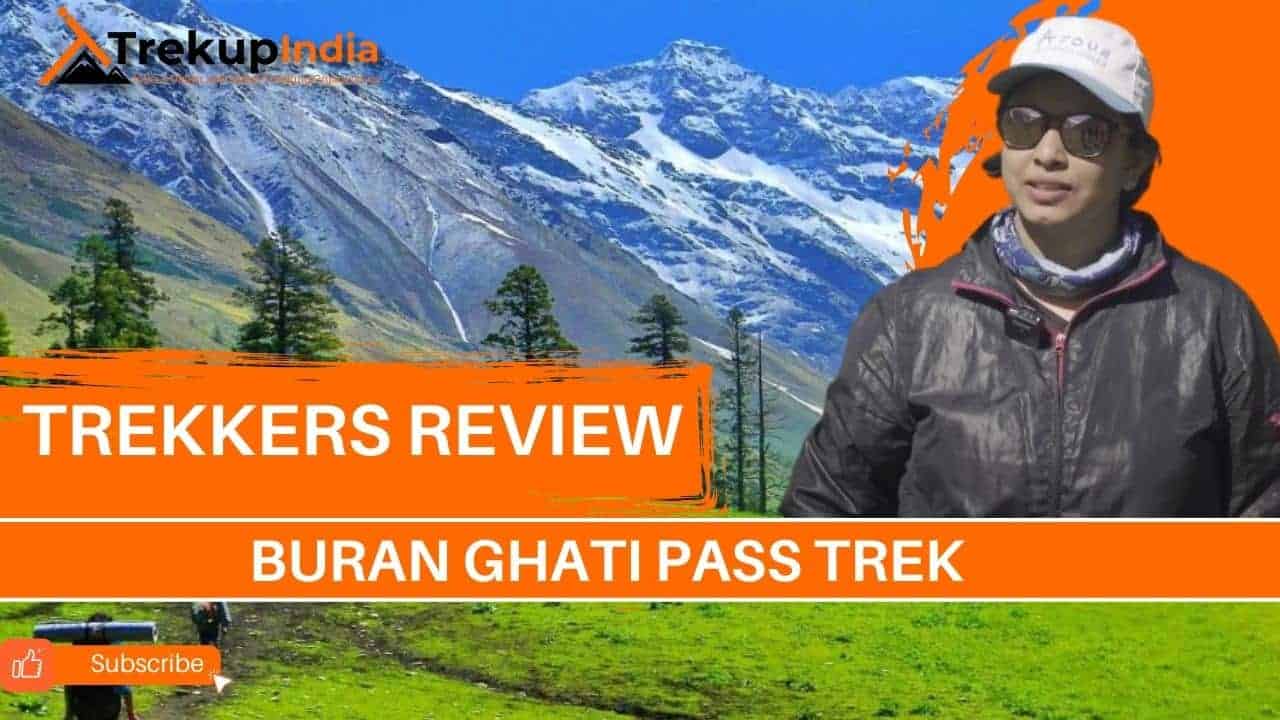

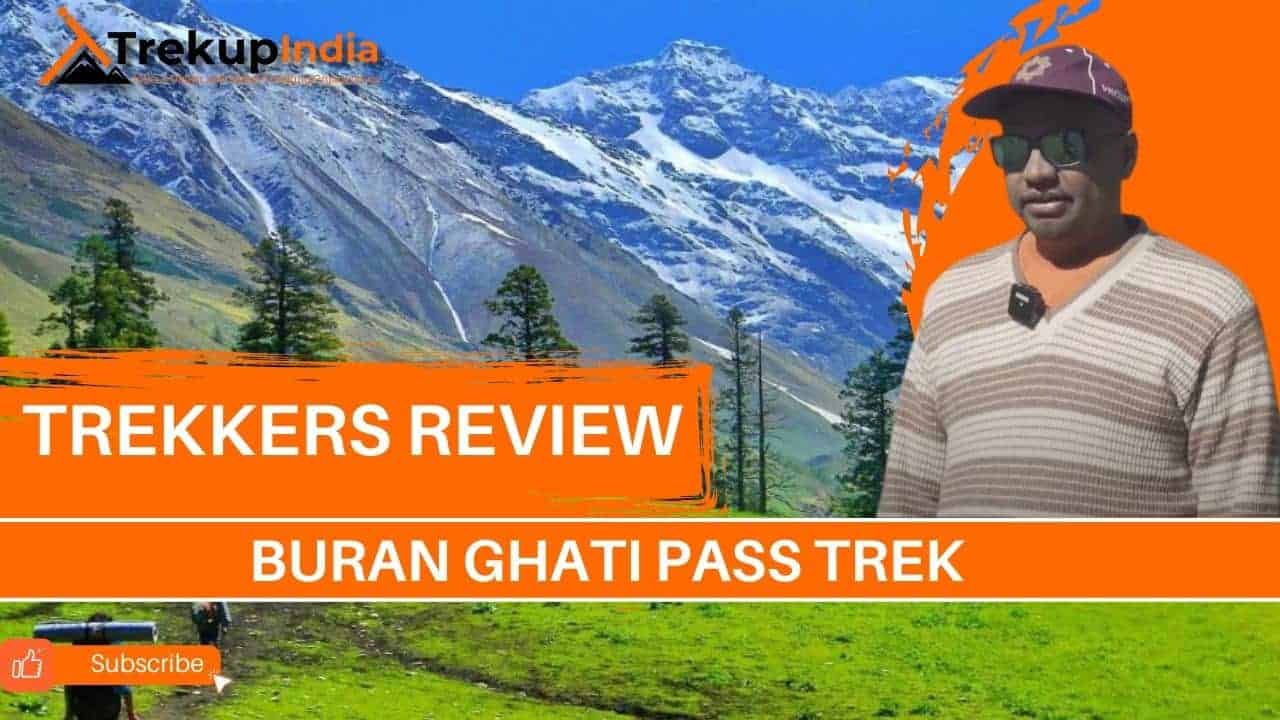

Food Provided by Us During Trek
We provide only Indian vegetarian food, and your meal will mainly consist of Indian bread, vegetables, lentils, rice, and a delicious dessert. During your trek, we will serve three meals a day, including breakfast, lunch, and dinner. You will also be served tea, snacks, and lip-smacking soup in the evening before dinner. If it is a long day of trekking, you will be given a packed snack.
After extensive research on the trekkers’ nutritional requirements, we prepare the menu. Before putting all the meals together, we also consider the altitude and the weather.
The meal we serve during the trek is perfectly balanced with calories, carbohydrates, vitamins, protein, fibre, and minerals. You need to know that all our cooks have great expertise in cooking and have undergone thorough training. So, get ready to enjoy delectable and lip-smacking dishes during your trek. You will be served with lemon tea in the tent to start your day with a refreshed feeling. Before leaving the campsite for trekking, you will be given a hot finger-licking breakfast like upma, Aallu Prantha, Besan Chilla, Poha, Daliya, Corn flakes, and Maggie, along with tea or coffee.
If your trek is longer, we also offer some fresh local fruits such as apples and healthy drinks like Frootie or Maaza. In the afternoon, you will be served a simple & healthy lunch, while at around 04:00 pm, you will be given tea and a light evening breakfast. After you reach your campsite at night, you will be served a hot and delightful dinner.
After reading this, you must have understood the food we provided on the trek; you don’t need to worry about food. Many trekkers repeatedly trek with us because of the food we provide. Thus, we will give you unforgettable experiences.
Safety During Buran Ghati Trek

Trekking with us for the Buran Ghati Trek is entirely safe because we have a team of trek leaders qualified in Wilderness first-aid and complete information about the high-altitude glitches. During the trek, we carry a full first-aid kit that contains all the essential medicines. Before trekking with us, you must ensure that you are medically fit for the trek; for us, your medical fitness is more important than anything else.
Right from our establishment, we at Trekup India have been continuously introducing new safety practices into Indian trekking to ensure the safety of voyagers. Trekup India introduced microspikes and made emergency bottled oxygen mandatory for all treks. Our trek leaders take your daily Pulse oximeter reading. We at Trekup India introduced the radio walkie-talkie as a safety communication device.
How can we ensure that your trek is safe with us?
We have noticed that most trek-organizing organizations do not follow these systems, but with time, they are following us; several competing companies are adopting these practices and organizing great, safe treks.
We ensure complete technical safety in the mountain. Our company has a vast team of more than 100 guides and trek leaders who serve on Himalayan treks. One of the best things about our team is that all the members are trained professionally by the Nehru Institute of Mountaineering, Indian Mountaineering Foundation Delhi, and Hanifle Center Outdoor Education Mussoorie.
Explore our New Safety Protocols
To ensure a perfect Trek, we have introduced some new safety checks to ensure excellent safety for our trekkers.
Our On-trek safety checks include:
- Daily oxygen saturation, along with pulse readings
- Stretchers team appointed on every trek
- Radios
- Trained mountain staff and complete safety
- Additional oxygen cylinders
- Special medical kit for high-altitude treks
- Microspikes on all types of snow treks
- Experienced Trek leaders, as well as safety
- Technical team on all snowy slopes
For Us, Your Safety Is the Top Priority
At Trekup India, you will find a team with local knowledge and fluency in English and Hindi. This helps ensure that you have a fantastic trek. Not only this, but we also pay attention to your health and safety because this is something we cannot ignore. All the team leaders involved in trekking have already undergone several professional courses in first aid, portable altitude chamber training, CPR, environmental awareness training, and advanced wilderness emergency medicine.
We also carry a complete first aid medical kit on every trek and trip we organize. Apart from the medical kit, we take a portable altitude chamber (if needed) and medical oxygen for all high-altitude treks. Our company has significant expertise in organizing all sorts of group adventure holidays for family groups, school and college groups, and friend groups. We have many travel options that suit different fitness levels and travelling styles.
Regardless of the group size, we value each and every member of our trekking groups. Our commitment to personal attention ensures that your needs and safety are always our top priority.
Who we are?
Trekup India has been a stalwart in the Adventure Tourism industry for 30 years. Since our inception, we have been dedicated to providing top-notch treks, voyages, trekking programs, and high-altitude expeditions. Our extensive experience is a testament to our commitment to your adventure and safety.
We organize treks in Uttarakhand, Kashmir, Sikkim, and Himachal while being part of the trekking community; we feature more than 75 documented Himalayan treks. In addition to other outdoor activities, our company also organizes trips for schools, colleges, and families.
Therefore, we maintain the quality of services offered to our valuable customers.
Must Read These Information Of Buran Ghati Trek
Why You Should Do Buran Ghati Trek
Dayara Meadows is one of the most captivating sections for trekkers. As you ascend from the dense coniferous forests, the meadows offer a breathtaking view. The vast tableland, carved from the mountain, is a sight to behold. With one side covered in grass ascending towards the hill and the other side dropping into the canyons, the sizeable green stretch provides ample space for horses to gallop. Camping in such a beautiful setting on the very first day of the trek was unbelievable. Dayara meadows are my favourite among all the meadows I’ve encountered on various treks.
Buran Ghati Trek presents a thrilling challenge, taking trekkers up to 15,000ft. Rappelling down from the Buran Ghati wall and reaching the summit is an incredible experience. The wall is gaining recognition and is the highest point for rappelling worldwide. The trek also offers the excitement of sliding down several snow chutes, making it a must-do adventure for trekkers.
Litham campsite left a lasting impression on me. Situated at the confluence of two valleys, it offered stunning views of both valleys. The towering waterfalls of Chandranahan snout provided a mesmerizing sight, making it essential to remain vigilant. While many people talk about the Rupin waterfalls on the Rupin Pass hike, the Chandranahan waterfalls are equally spectacular.
The side trip to Chandranahan Lake is underrated. The experience was more enjoyable than crossing Buran Ghati. The journey to the alpine area through the narrow, snowy valley, surrounded by snow-capped mountains, and witnessing the Pabbar River was a visual delight. The memories of crossing beautiful ledges to reach the valley’s heart remain vivid.
The river campsite was another highlight. Set at a fantastic altitude, the camp offered a stunning view of the Buran wall. Surrounded by alpine environments, camping at such high altitudes was a surreal experience. Dhunda, another high camp, provided a thrilling perspective of Buran Ghati. The camp’s waterfall added to the overall happiness of the trek.
The trek also offers the opportunity to explore the upper village and observe the local culture, gradually making your way to the foot of the town nearly a thousand feet below. Paying attention to the architecture, the people, and the temple and enjoying abundant fruit trees enriches the trekking experience.
Best time to do Buran Ghati Trek
If you’re planning to do the stunning Buran Ghati trek, believe me when I say that you’re in for a lifetime experience. But like any other high-altitude Himalayan trek, timing can be everything between a merely decent trek and an absolutely memorable one. From snowy landscapes in May to golden meadows in October, every season brings its own magical charm to the trails. I have written this article to help you understand when would be the best time to go on the Buran Ghati trek.
Let’s get into it.
Buran Ghati Trek in May: A Snowy Experience
For those who wish to trek across snow-covered terrains, Buran Ghati trek in May is a dream come true. May is the very start of the trekking season, and the path remains covered with snow. This increases the difficulty of the trek a bit, but immensely rewarding for those who take it up.
The meadows are just beginning to show through the snow, presenting a stunning contrast of white and green. Frozen streams, snow bridges, and that famous snow wall close to Buran Pass remain intact. The weather is chilly but tolerable, particularly during the daytime when the sun shines. The nights can get cold, so it’s essential to arrive ready with the right equipment and choose the right trekking organization to ensure a safe trip. If you’re the type who needs a little excitement and don’t object to some snow on the ground, May is a great time to witness the beauty of Buran Ghati.
Buran Ghati Trek in June: The Meadows in their full glory
June is hands down the best month to embark on the Buran Ghati trek. By June, the snow melts to unveil the grassy green underside of the mountains. Trekking in Buran Ghati in June is a total visual feast. Wildflowers begin to bloom on large meadows, and the track buzzes with the sounds of life. The weather is perfectly warm; enough during the day for trekking and pleasantly cool in the evenings.
This is when streams are full of glacial melt, the pine forests release their loamy scent, and the whole trail is like from a storybook. The snow wall at the pass still persists in June, presenting trekking enthusiasts with the opportunity to witness the dramatic downclimb Buran Ghati is famous for, but with the added luxury of more favorable weather and more transparent skies.
Then July onwards, the trek closes for the monsoons. The heavy rainfall makes the path slippery and unsafe so the trek is not recommended in the months of July and August.
Buran Ghati in September: The least crowded season
As the monsoon goes by, the rainfall has washed over the terrain clean. This month brings crystal clear blue skies and revitalized trails. The atmosphere is fresh and sharp, the vision is clear, and the view of snow-kissed mountains such as Kinner Kailash is breathtakingly stunning.
The path is stable and dry, so it’s less challenging to walk on. You’ll get a combination of late-summer foliage and the first blush of autumn. Plus, the crowd is thinner than in June, providing a quieter, more reflective trekking experience. If you want natural beauty and quiet, September is definitely one of the best months to go on the Buran Ghati trek.
The Buran Ghati trek in October is the spectacle that precedes this part of India closing shop before winter descends. When this is when nature is coloured like a wild garden in harvest seasons, emerald and amber colours drape themselves over hillsides and jungles. Skyscapes remain sharp and often sharp, ranking the month being one of photography and scene for viewing for peak months.
October is so pleasant because it is balanced, the weather is cool but not cold, and the views are simply breathtaking. It is also the final window during which to make the trek before snowfall starts closing up the path. If you enjoy trekking in serene, sun-kissed fall landscapes, this is your ideal time.
Buran Ghati Trek Best Time: The Final Verdict
The straight truth? It’s up to what you want.
- For adventure seekers and snow enthusiasts: try Buran Ghati trek in May
- For flowers on the meadows and photographs-perfect climate: June is the way to go.
- For blue skies and isolation: there’s nothing like Buran Ghati trek in September.
- For autumn foliage and regal scenery: schedule your Buran Ghati trek in October.
How Difficult is the Buran Ghati Trek
The Buran Ghati trek presents a moderate to difficult challenge, with the most demanding section being the day of crossing the pass. Mental strength is just as important as physical fitness on this trek. If you opt for a June trek, the pass crossing day will involve descending at least 400 meters down an icy wall using rappelling. In autumn, the pass crossing remains challenging even without snow, requiring a long trek through a rocky portion. Apart from this section, the trek is difficult and should not exhaust you if you are well-prepared.
Frequently Asked Questions About Buran Ghati Trek
Is descending via rope from the Buran Pass summit a feature of my trekking route?
The Buran Ghati Trek is a spectacular high-altitude adventure nestled in the Himachal Pradesh region of India. This trail seamlessly links the remote villages of Janglik and Barua in the enchanting Pabbar Valley. Along the route, trekkers are treated to a stunning variety of landscapes—ranging from dense pine and oak forests to sprawling alpine meadows, dramatic rock faces, and snow-covered mountain passes. Known for its thrilling descents and breathtaking vistas, Buran Ghati offers an unforgettable experience for those seeking both challenge and beauty in the heart of the Himalayas.
What is the Buran Ghati Trek?
The Buran Ghati Trek is rated as moderate to difficult, making it best suited for trekkers with some prior high-altitude experience. The trail features steep ascents, rugged sections, and the thrilling challenge of crossing the Buran Pass at over 15,000 feet. At times, trekkers must navigate snowfields, sharp ridgelines, and tricky descents—especially during early summer or post-monsoon seasons. While demanding, the trek rewards preparation and perseverance with unmatched alpine beauty and a true sense of adventure.
How difficult is the Buran Ghati Trek?
One of the highlights of the Buran Ghati Trek is the chance to experience rappelling down an icy wall at the 15,000-foot Buran Pass—a truly thrilling adventure. This unique activity is typically possible if you trek between May and June, when the pass remains blanketed in snow. During this time, climbers descend the steep, icy slope with ropes, adding an adrenaline-pumping twist to the journey. However, most of the snow has melted by September and October, making rappelling unnecessary and not part of the trek experience in those months.
What is the best time to do the Buran Ghati Trek?
The best time to embark on the Buran Ghati Trek is during the summer months of May to June and the post-monsoon season from September to October. These windows offer the most favorable trekking conditions, with clear skies, moderate temperatures, and a well-defined trail. Summer brings lingering snow at higher altitudes, enhancing the thrill of the journey, while autumn offers vibrant landscapes and crisp mountain air.
How long does the Buran Ghati Trek take?
The Buran Ghati Trek typically spans 7 to 8 days, depending on the chosen itinerary and the pace of the group. This duration allows ample time for acclimatization, exploration, and safe passage across the high-altitude terrain.
What is the maximum altitude of the Buran Ghati Trek?
The highest point of the trek is the Buran Ghati Pass, which soars to an elevation of 15,000 feet (4,572 meters) above sea level. This dramatic mountain pass serves as both the physical and emotional high point of the journey, offering panoramic views of snow-clad peaks and a sense of true Himalayan adventure.
Is prior trekking experience required for the Buran Ghati Trek?
Prior trekking experience is strongly recommended for the Buran Ghati Trek. The route includes steep ascents, high-altitude camping, and long trekking days that can test endurance and stamina. The thin mountain air above 12,000 feet and occasional snow crossings further add to the physical and mental challenge. While not technical, the trek demands good fitness and familiarity with mountain terrain, making it better suited for those who have completed at least one high-altitude trek before.
What is the total distance of the Buran Ghati Trek?
The Buran Ghati Trek covers a distance of approximately 40 to 45 kilometers, depending on the specific route taken and the number of stops planned along the way. This moderate-length trail is spread across varied terrain, allowing trekkers to experience a wide range of Himalayan landscapes within a compact yet rewarding journey.
What level of physical fitness is required for this trek?
Trekkers should possess a solid level of physical fitness to successfully complete the Buran Ghati Trek. The journey demands stamina for long hiking days, leg and core strength for steep ascents and descents, and the endurance to cope with high-altitude conditions. Preparing with a consistent fitness routine—focusing on cardiovascular activities like running, cycling, or swimming, along with strength training and hiking practice—can significantly improve performance and safety on the trail.
Do I need to carry my food during the Buran Ghati Trek?
No, trekkers don’t need to worry about food, as it is generally provided by Trekup India. Experienced local cooks and support staff prepare wholesome, high-energy meals designed to meet the nutritional needs of high-altitude trekking, ensuring participants stay well-fueled and healthy throughout the journey.
Is there mobile network connectivity on the Buran Ghati Trek?
Mobile network coverage is limited along the Buran Ghati Trek, particularly as you ascend to higher altitudes. While signal may be completely unavailable in more remote sections, some areas closer to the villages might have a weak or intermittent connection.
What are the accommodation options during the Buran Ghati Trek?
Accommodation on the Buran Ghati Trek is typically in tents, providing a true wilderness experience. However, in the village of Janglik, trekkers will stay in cozy guesthouses or homestays, offering a chance to experience local hospitality. For the camping portion of the trek, all necessary gear—such as tents, sleeping bags, and mattresses—is provided, ensuring a comfortable and well-equipped stay in the mountains.
What should I pack for the Buran Ghati Trek?
Essential items for the Buran Ghati Trek include sturdy trekking shoes for rugged terrain, a warm jacket to protect against chilly mountain temperatures, trekking poles for added stability, and gloves to keep hands warm in colder conditions. Don’t forget sunglasses and a hat for sun protection, a reliable first aid kit, and a headlamp for night-time visibility. A durable water bottle is crucial to stay hydrated, and clothing layers that can adapt to varying temperatures are necessary to stay comfortable throughout the trek.
Is there any risk of altitude sickness on the Buran Ghati Trek?
Due to the high altitude, trekkers on the Buran Ghati Trek may be at risk of altitude sickness. Acclimatization is crucial to reduce this risk, so it’s important to take regular breaks, avoid rushing, and gradually allow the body to adjust to the thinner air. Staying well-hydrated and consuming adequate calories will also help maintain energy levels and minimize symptoms. Listening to your body and reporting any signs of altitude sickness—such as headaches, dizziness, or nausea—promptly is key for a safe trek.
What is the weather like on the Buran Ghati Trek?
The weather on the Buran Ghati Trek can be highly unpredictable, so trekkers should be prepared for varying conditions. During the day, temperatures typically range from 5°C to 15°C, but they can plummet below freezing at night, particularly at higher altitudes. As you ascend, snow is also a possibility, especially in the upper reaches of the trek, adding to the challenge and beauty of the landscape.
Are there any water sources on the Buran Ghati Trek?
There are several streams and natural water sources along the Buran Ghati Trek, providing ample opportunities to refill water bottles. However, to ensure the water is safe for drinking, it’s advisable to carry water purification tablets or a portable water filter. This will help eliminate any potential contaminants and keep you hydrated throughout the journey.
How do I get to the starting point of the Buran Ghati Trek?
The trek begins at Janglik, which is approximately 160 kilometers from Shimla and can be reached by road. You can take a bus or hire a taxi from Shimla to Janglik, making it an accessible starting point for your adventure.
Can I trek Buran Ghati solo?
While it is possible to undertake the Buran Ghati Trek solo, it is highly recommended to join an organized trekking group, especially if you’re less experienced with high-altitude treks. Solo trekking can be risky due to the challenging terrain, unpredictable weather, and the potential for altitude sickness. Having a guide and support crew ensures safety, proper acclimatization, and a more enjoyable trekking experience.
Are there any opportunities to see wildlife on the Buran Ghati Trek?
Trekkers on the Buran Ghati Trek may have the opportunity to spot a variety of wildlife, including the vibrant Himalayan Monal, elusive musk deer, and numerous bird species native to the region. However, wildlife sightings are not guaranteed, as these animals tend to be shy and elusive in their natural habitat.
Is the Buran Ghati Trek safe?
The Buran Ghati Trek is generally safe when trekkers are well-prepared, follow the guidance of experienced guides, and adhere to essential safety precautions. However, like any high-altitude trek, it does carry inherent risks related to altitude, weather, and challenging terrain. Proper preparation and awareness are key to ensuring a safe and enjoyable experience.
What makes the Buran Ghati Trek unique?
The Buran Ghati Trek offers a captivating blend of diverse landscapes, from lush, dense forests to picturesque villages nestled in the mountains. This rich variety of scenery, combined with the thrill of high-altitude trekking, makes it a truly memorable adventure for all who undertake it.


